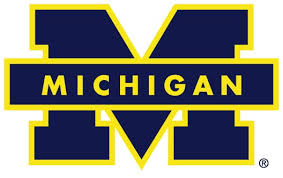Ureteral Stent Placement After Ureteroscopy for Renal Stones: A Randomized Controlled Trial
| Status: | Not yet recruiting |
|---|---|
| Conditions: | Nephrology, Nephrology, Nephrology |
| Therapuetic Areas: | Nephrology / Urology |
| Healthy: | No |
| Age Range: | 18 - Any |
| Updated: | 3/1/2019 |
| Start Date: | March 2019 |
| End Date: | March 2022 |
| Contact: | Ryan Hsi, MD |
| Email: | ryan.hsi@vumc.org |
| Phone: | 615-343-2036 |
The rationale for this study is to determine if there is a difference in complications among
patients undergoing ureteroscopy for renal stones who receive a stent compared to not
receiving a stent postoperatively.
patients undergoing ureteroscopy for renal stones who receive a stent compared to not
receiving a stent postoperatively.
Kidney stones affect 9% individuals within the United States, and the prevalence is
increasing. Over the last few decades, ureteroscopy has become the most commonly performed
stone procedure. However the complication rate after ureteroscopy is not insignificant.
Reducing morbidity after ureteroscopy would improve patient outcomes and reduce health care
utilization.
A major contributor to patient morbidity after ureteroscopy is the ureteral stent, which is
placed at the time of surgery and left in place 1-2 weeks after surgery. The rationale for
utilizing stents is to prevent urinary obstruction from edema or stone fragments. On the
other hand, stents cause hematuria, pain, and lower urinary tract symptoms. Additionally,
stent-related symptoms are often misdiagnosed as urinary tract infections leading to
unnecessary antibiotic use.
The clinical utility of ureteral stents after ureteroscopy has not been well studied,
specifically a stone located in the kidney. Prior studies on stent-less ureteroscopic
procedures have focused on treatment of ureteral stones and not stones located in the kidney,
have had restrictive inclusion and exclusion criteria, are primarily from single center
institutions, and most being performed ~15 years ago. Surgical techniques and device
innovations have changed the procedure since that time. To date, there have been only 2
studies that included stone located in the kidney showing no difference in unplanned hospital
revisits, however both combined analyses with ureteral stones and selection bias was an issue
for both studies. In addition, there is a lack of studies assessing opiate use, impact of
quality of life with stent placement, and loss of work related to stent placement
increasing. Over the last few decades, ureteroscopy has become the most commonly performed
stone procedure. However the complication rate after ureteroscopy is not insignificant.
Reducing morbidity after ureteroscopy would improve patient outcomes and reduce health care
utilization.
A major contributor to patient morbidity after ureteroscopy is the ureteral stent, which is
placed at the time of surgery and left in place 1-2 weeks after surgery. The rationale for
utilizing stents is to prevent urinary obstruction from edema or stone fragments. On the
other hand, stents cause hematuria, pain, and lower urinary tract symptoms. Additionally,
stent-related symptoms are often misdiagnosed as urinary tract infections leading to
unnecessary antibiotic use.
The clinical utility of ureteral stents after ureteroscopy has not been well studied,
specifically a stone located in the kidney. Prior studies on stent-less ureteroscopic
procedures have focused on treatment of ureteral stones and not stones located in the kidney,
have had restrictive inclusion and exclusion criteria, are primarily from single center
institutions, and most being performed ~15 years ago. Surgical techniques and device
innovations have changed the procedure since that time. To date, there have been only 2
studies that included stone located in the kidney showing no difference in unplanned hospital
revisits, however both combined analyses with ureteral stones and selection bias was an issue
for both studies. In addition, there is a lack of studies assessing opiate use, impact of
quality of life with stent placement, and loss of work related to stent placement
Inclusion Criteria:
- nonobstructing renal stone 1.5cm total stone diameter (if multiple stones, then sum of
maximum diameters) or less undergoing ureteroscopy
Exclusion Criteria:
- age < 18 years
- pregnancy status
- ureteral stone
- preoperative hydronephrosis
- indwelling nephrostomy tube
- planning bilateral ureteroscopy or subsequent staged ureteroscopy
- solitary kidney or eGFR <60 mL/min (CKD stage 3 or greater)
- variant anatomy including horseshoe kidney, pelvic kidney, prior urinary tract
reconstruction
We found this trial at
7
sites
University of California-Davis As we begin our second century, UC Davis is poised to become...
Click here to add this to my saved trials
1211 Medical Center Dr
Nashville, Tennessee 37232
Nashville, Tennessee 37232
(615) 322-5000

Vanderbilt Univ Med Ctr Vanderbilt University Medical Center (VUMC) is a comprehensive healthcare facility dedicated...
Click here to add this to my saved trials
Maine Medical Center One of the country's consistently highest rated hospitals is right in your...
Click here to add this to my saved trials
University of Michigan The University of Michigan was founded in 1817 as one of the...
Click here to add this to my saved trials
Click here to add this to my saved trials
Click here to add this to my saved trials


